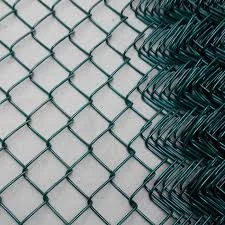Gabion Cages for Retaining Walls A Comprehensive Overview
In civil engineering and landscape architecture, retaining walls play a crucial role in preventing soil erosion, managing water drainage, and creating level areas in sloped terrains. One innovative and aesthetically pleasing approach to constructing retaining walls is the use of gabion cages. These structures, composed of wire mesh filled with stones or other materials, provide a sustainable and effective solution for various construction challenges.
What are Gabion Cages?
Gabion cages are essentially rectangular baskets made from welded or woven wire mesh. Once constructed, these cages are filled with rocks, stones, gravel, or even concrete to form a sturdy wall or barrier. The term gabion comes from the Italian word gabbione, meaning big cage. Traditionally, gabions were used for military fortifications and erosion control, but their applications have since expanded to include modern landscaping and civil engineering projects.
Advantages of Gabion Cages
1. Eco-Friendly Solution One of the most significant benefits of gabion cages is their environmental compatibility. Using natural materials like stones allows for drainage and promotes vegetation growth, which can help further stabilize the soil. They often blend harmoniously with the surrounding landscape, making them an attractive option for retaining walls.
2. Cost-Effective Gabion cages are often more economical than traditional retaining wall materials such as concrete or masonry. The simplicity of their design reduces labor costs, and the materials required can sometimes be sourced locally, minimizing transportation expenses.
3. Flexibility and Versatility Gabion cages can be shaped to fit various terrains and design requirements. They can be stacked, arranged, or modified easily to accommodate different heights and slopes. This adaptability makes them suitable for residential landscapes, roadways, and even larger commercial projects.
4. Durability When properly constructed and filled, gabion walls can withstand significant pressure from soil and water. They are resistant to weathering, making them a long-lasting solution that requires minimal maintenance over time. Their robust nature allows them to perform well in harsh climates and can effectively resist corrosion, especially when galvanized wire mesh is used.
5. Natural Drainage The gaps between the wires and the interstices in the stone fill enhance drainage, reducing the pressure behind the wall that can lead to failure. This natural drainage system makes gabion cages particularly effective in wet conditions, protecting against potential erosion and flooding.
gabion cages for retaining walls

Designing Gabion Retaining Walls
When designing a gabion retaining wall, several factors must be taken into account
- Height and Load Understanding the height and load that the wall will bear is essential. Typically, gabion walls can support heights of up to several meters, depending on the soil type and conditions.
- Foundation A solid foundation is crucial for the stability of a gabion wall. The base should be level and compact to distribute weight evenly.
- Geotextiles Incorporating geotextile fabric behind the wall can enhance stability by preventing soil from washing through the gaps in the mesh.
- Material Selection The choice of fill material is significant both for aesthetics and effectiveness. Local rock types and sizes should be considered to ensure proper fit and function.
- Erosion Control For sloped terrains, it may be beneficial to plant vegetation on or around gabion walls to further stabilize the soil and improve aesthetics.
Conclusion
Gabion cages are an innovative and efficient solution for constructing retaining walls that are both functional and visually appealing. With their eco-friendly characteristics, cost-effectiveness, and durability, gabion cages are gaining popularity in various construction applications. Whether for commercial projects or residential landscaping, gabion walls provide a practical approach to managing earth movement, erosion, and aesthetics, offering a versatile alternative to traditional retaining wall materials. As the need for sustainable construction solutions grows, gabion cages stand out as a remarkable choice in modern engineering and landscape design.
















